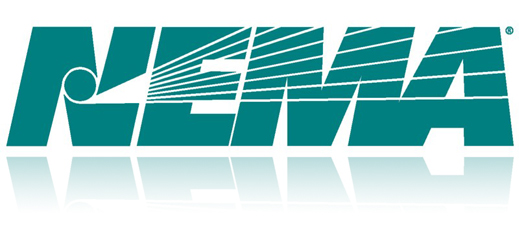The National Electrical Manufacturers Association (NEMA) Types

The National Electrical Manufacturers Association (NEMA) is a voluntary association of electrical equipment and medical imaging manufacturers. NEMA creates a set of standards and guidelines for products, technologies, and systems that are in the best interest of the users and the industry.The NEMA Enclosure Types are used by engineers, architects, installers, and inspectors to define standards for different types of electrical enclosures including heaters.
What are NEMA Types?
The NEMA types are a rating system for enclosures and other equipment that is exposed to environmental conditions or corrosive agents such as dust, coolant, oil, water, gasoline, or acetylene.
NEMA ENCLOSURE TYPES
Below are the definitions of the NEMA enclosure types:
NEMA ENCLOSURE TYPE |
NEMA DEFINITION |
| 1 | General-purpose. Protects against dust, light and indirect splashing but is not dust-tight; primarily prevents contact with live parts; used indoors and under normal atmospheric conditions |
| 2 | Drip-Tight. Similar to Type 1 but with addition of drip shields; used where condensation may be severe( as in cooling rooms and laundries). |
| 3 and 3S | Weather-resistant. Protects against weather hazards such as rain and sleet; used outdoors on ship docks, in construction work and in tunnels and subways. |
| 3R | Intended for outdoor use. Provides a degree of protection against falling rain and ice formation. Meets rod entry rain, external icing and rust-resistance design tests. |
| 4 and 4X | Watertight (weatherproof). Must exclude at least 65 GPM of water from 1-in. nozzle delivered from a distance not less than 10ft for 5 min. Used outdoors on ship docks, in dairies and in breweries. |
| 5 | Dust-tight. Provided with gaskets or equivalent to exclude dust; used in steel mills and cement plants. |
| 6 and 6P | Submersible. Design depends on specified conditions of pressure and time; submersible in water; used in quarries, mines and manholes. |
| 7 | Hazardous. For indoor use in Class 1, Groups A, B, C and D environments as defined in the NEC. |
| 8 | Hazardous. For indoor and outdoor use in locations classified as class 1, Groups E, F or G as defined in the NEC. |
| 9 | Hazardous. For indoor and outdoor use in locations classified as Class II, Groups E, F or G as defined in the NEC. |
| 10 | MSHA. Meets the requirements of the Mine Safety and Health Administration, 30 CFR Part 18 (1978). |
| 11 | General-purpose. Protects against the corrosive effects of liquids and gases. Meets drip and corrosion-resistance tests. |
| 12 and 12K | General-purpose. Intended for indoor use, provides some protection against dust, falling dirt and dripping noncorrosive liquids. Meets drip, dust and rust resistance tests. |
| 13 | General-purpose. Primarily used to provide protection against dust, spraying of water, oil and noncorrosive coolants. Meets oil exclusion and rust resistance design tests. |
For an easy to use reference guide, look at the ratings charts below that depict what each enclosure type protects against.
For more information click here.